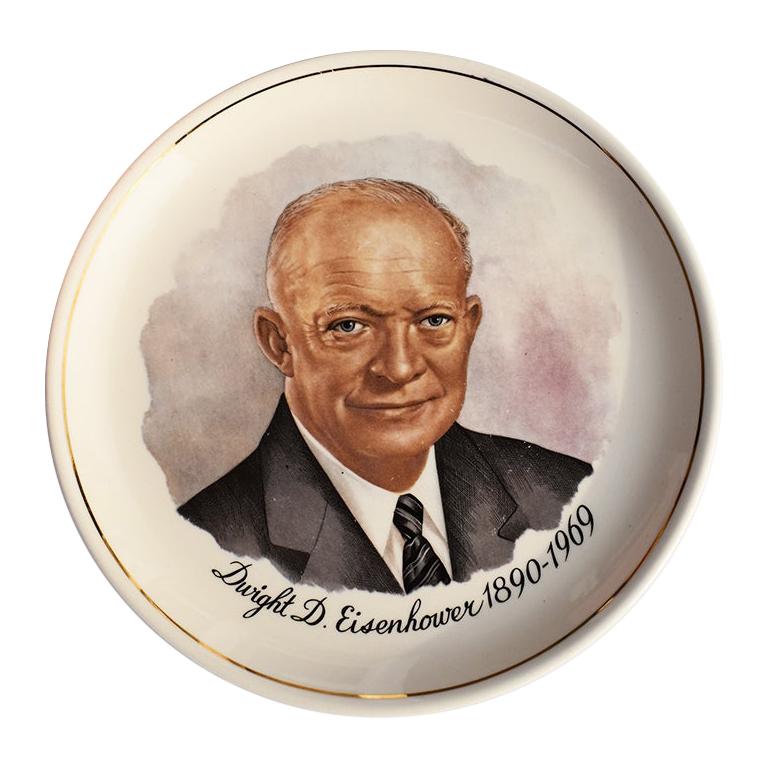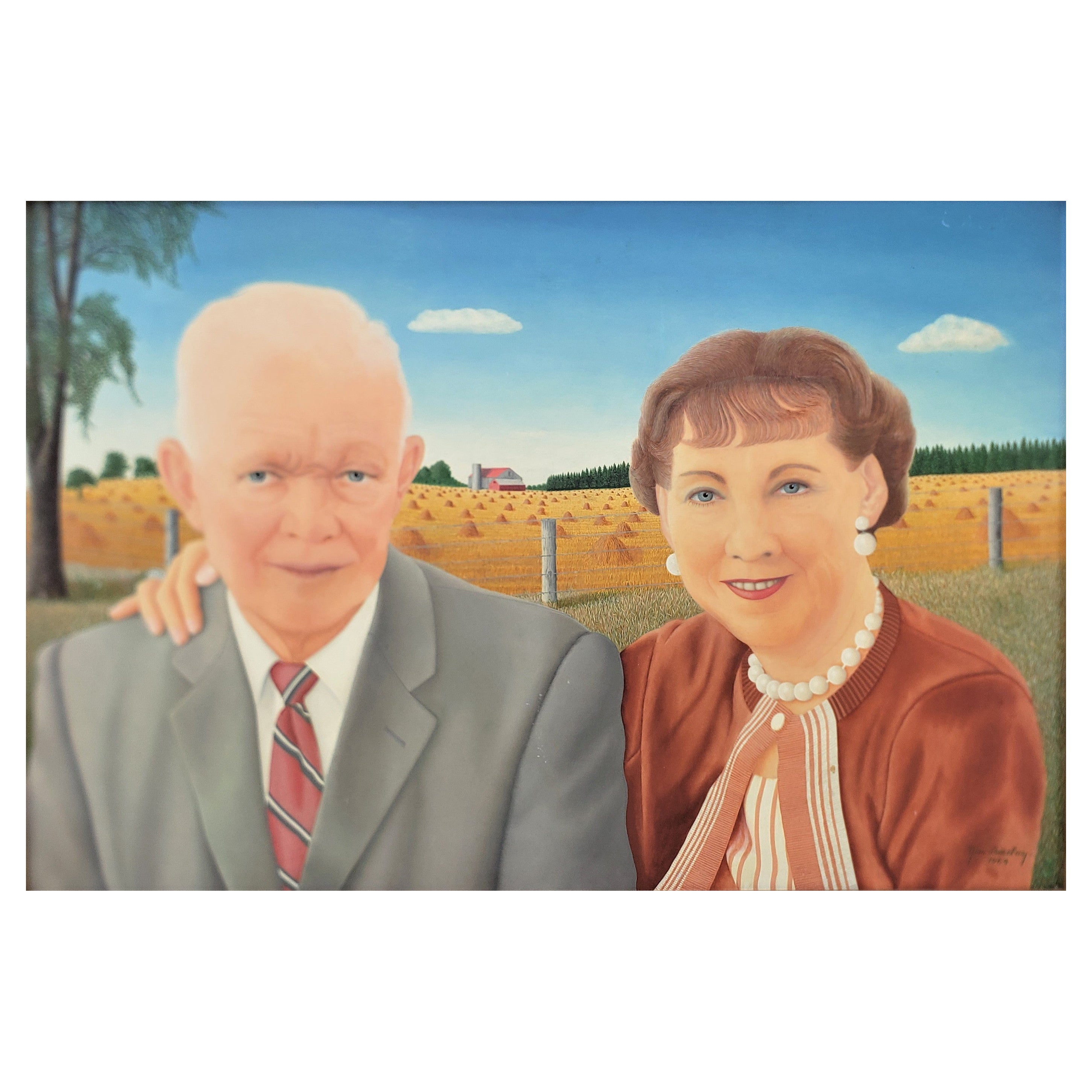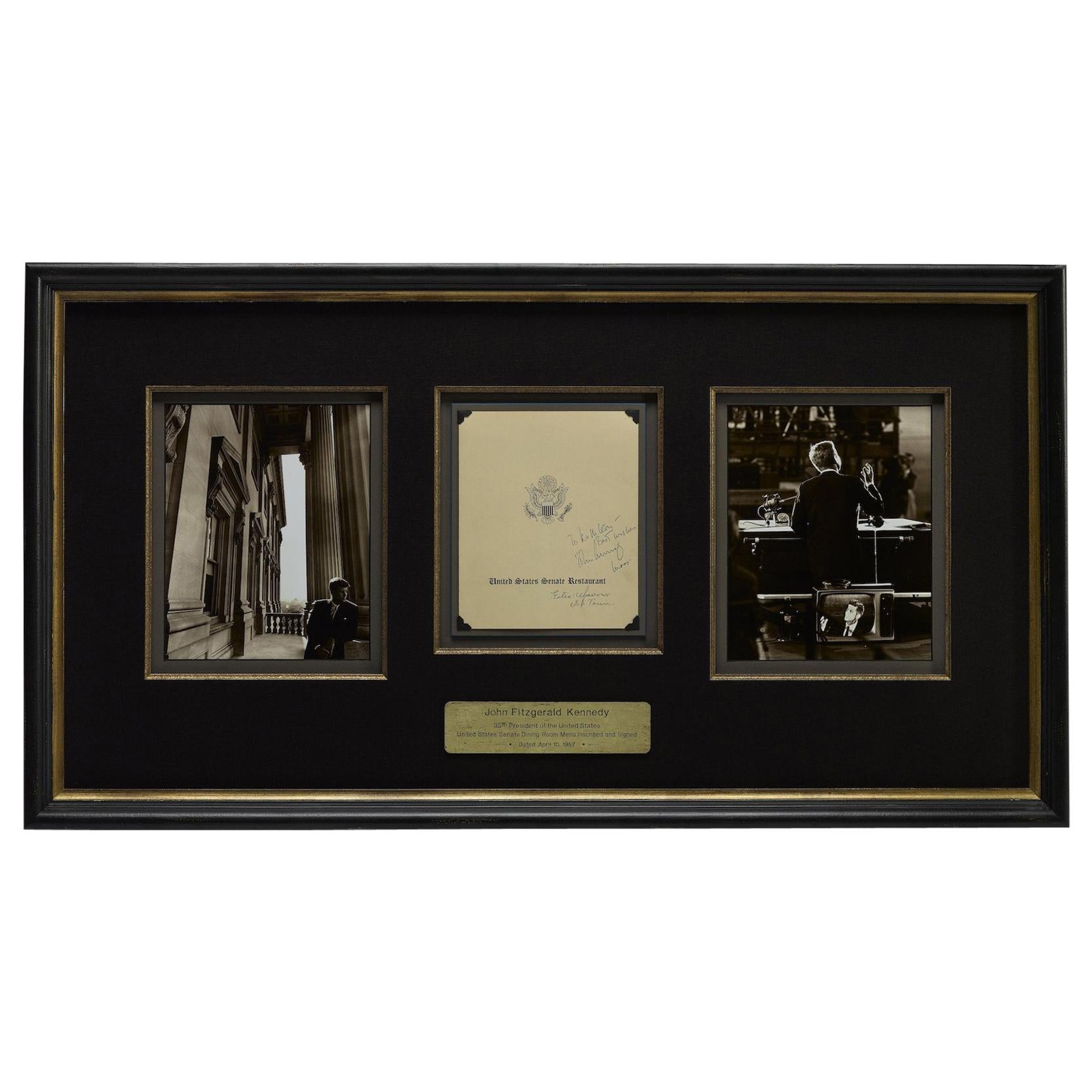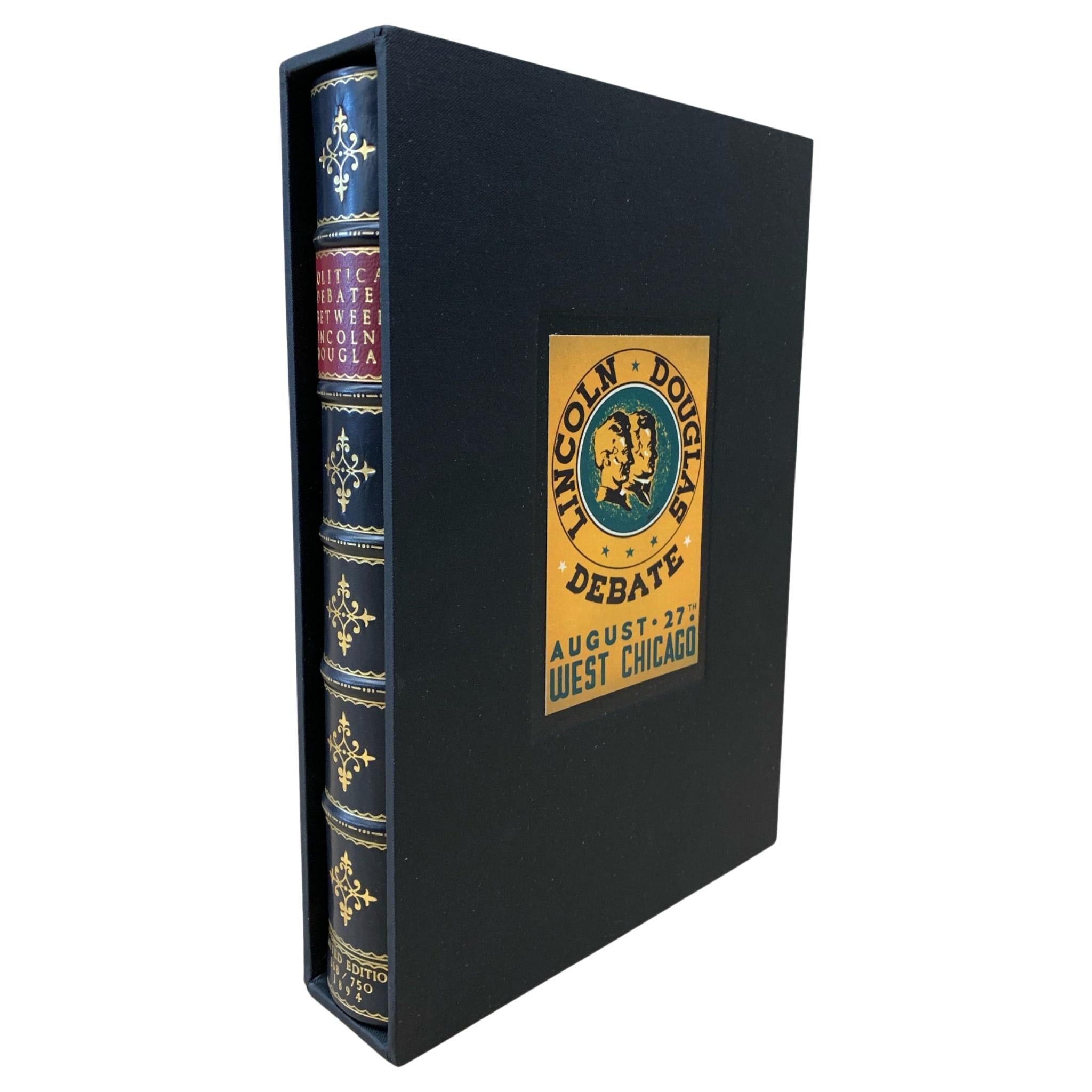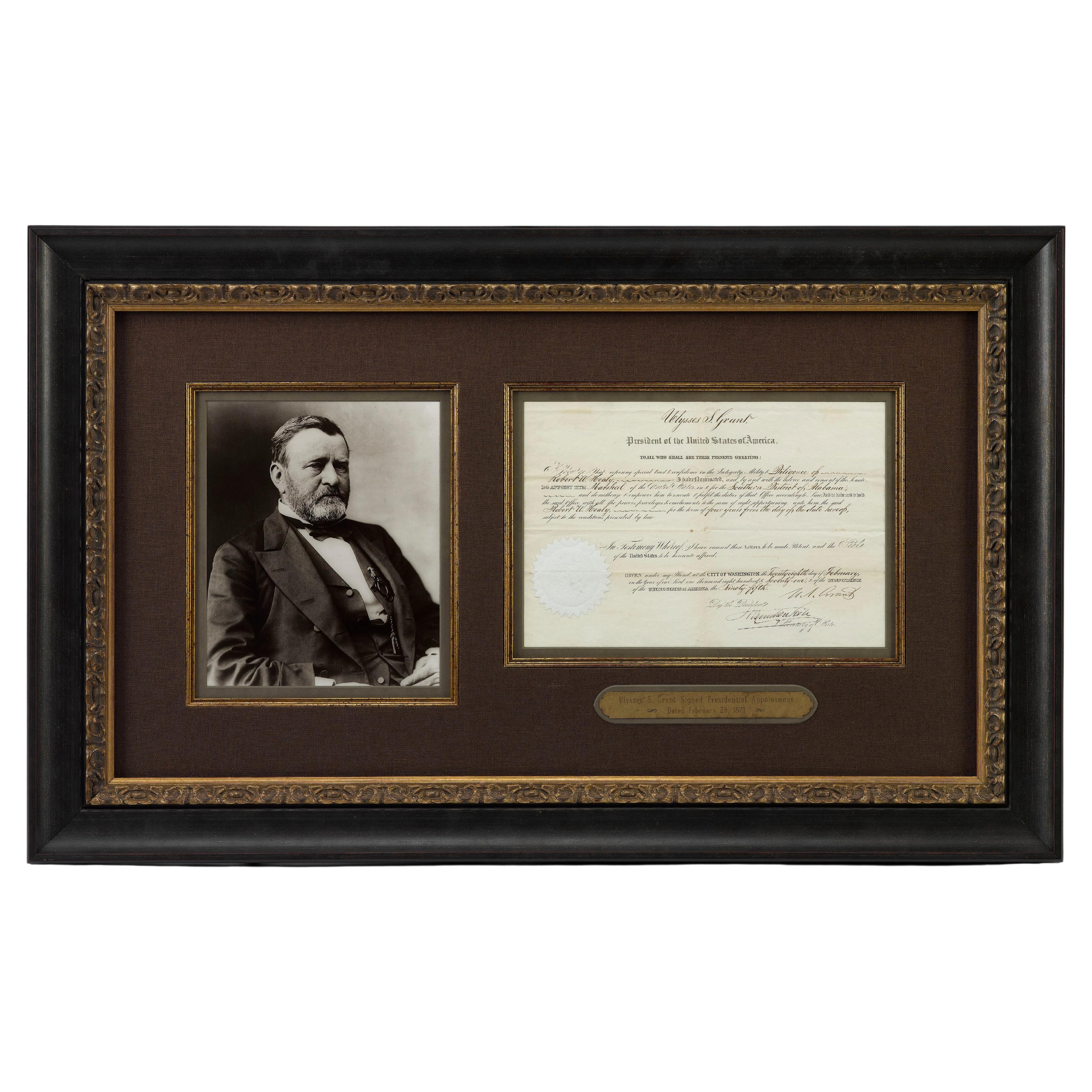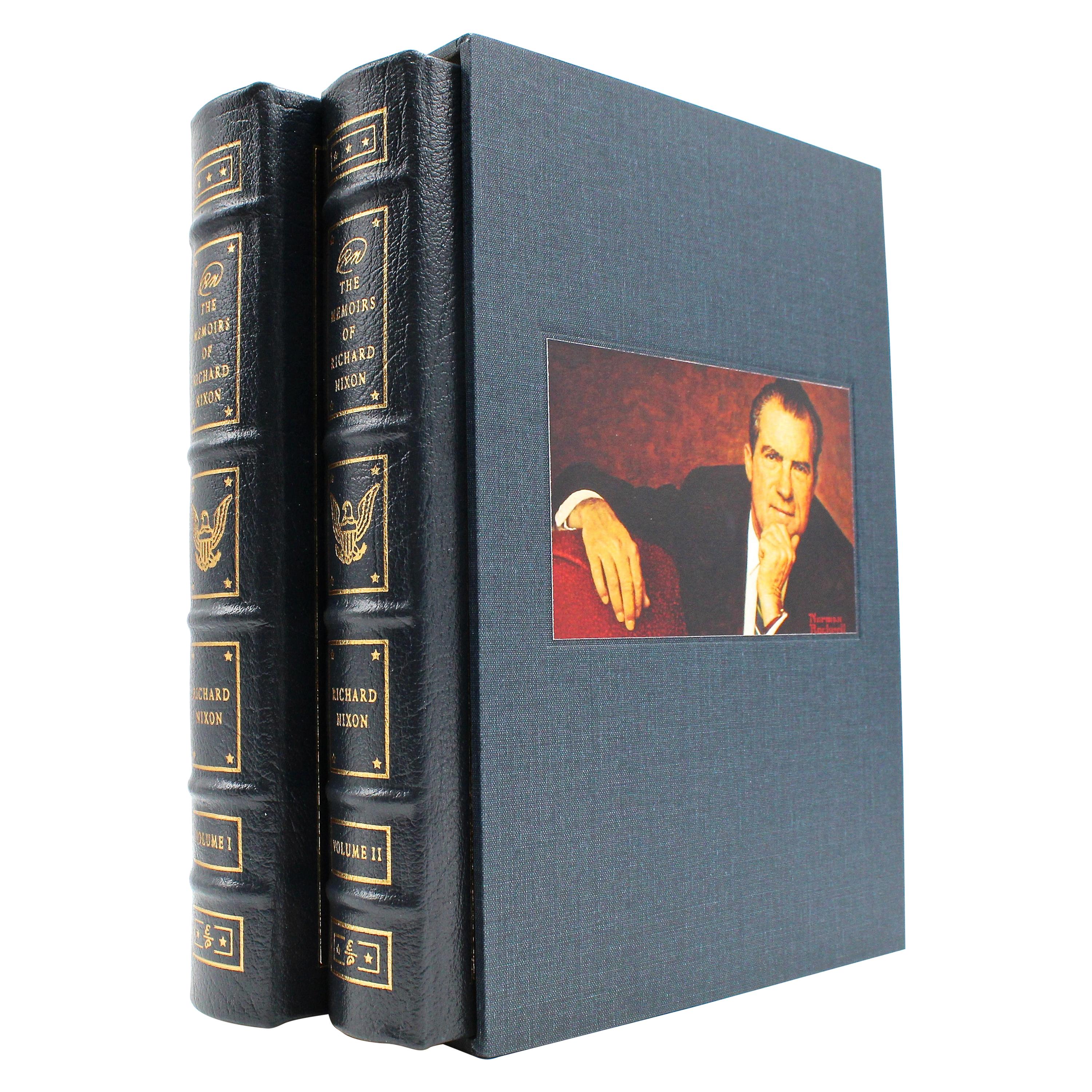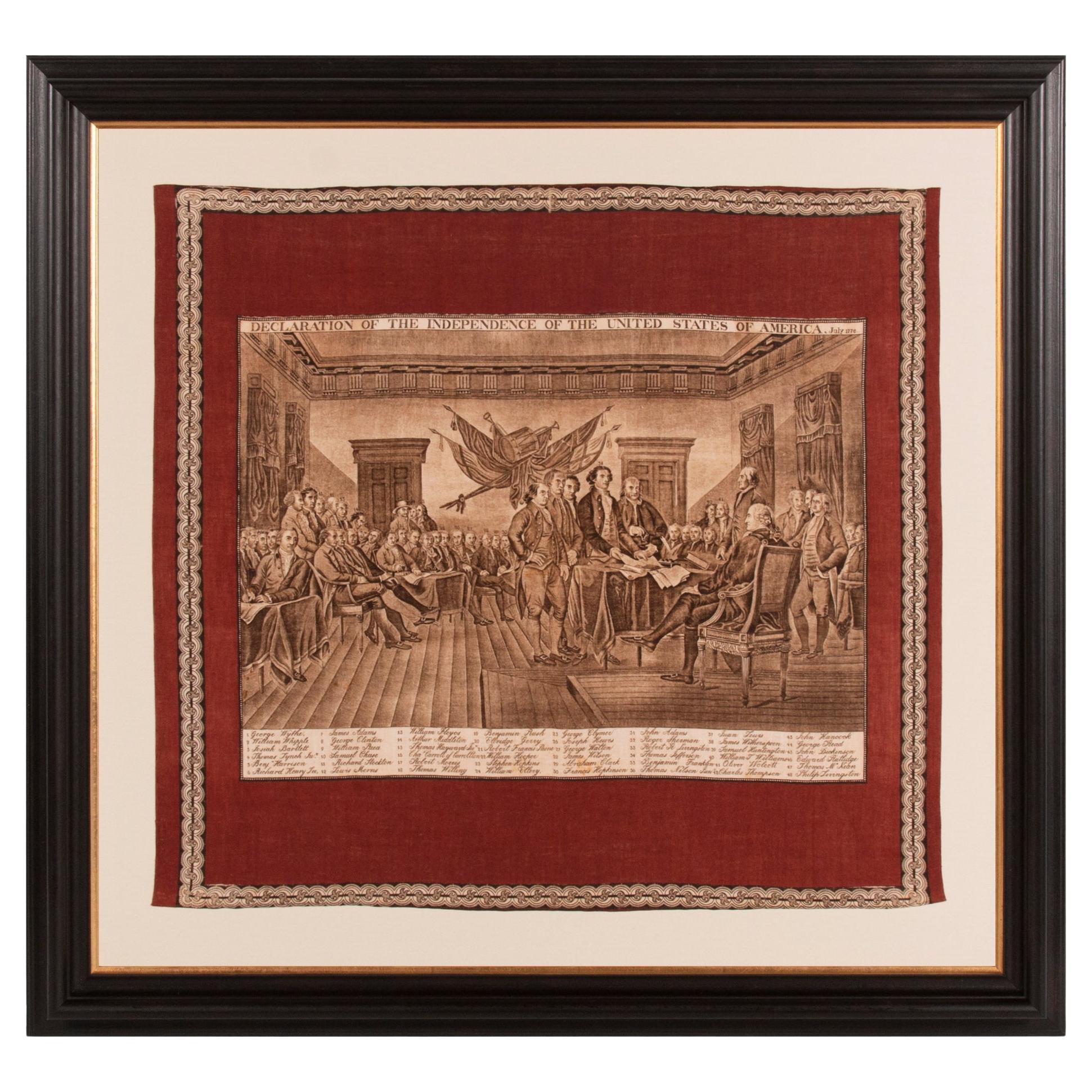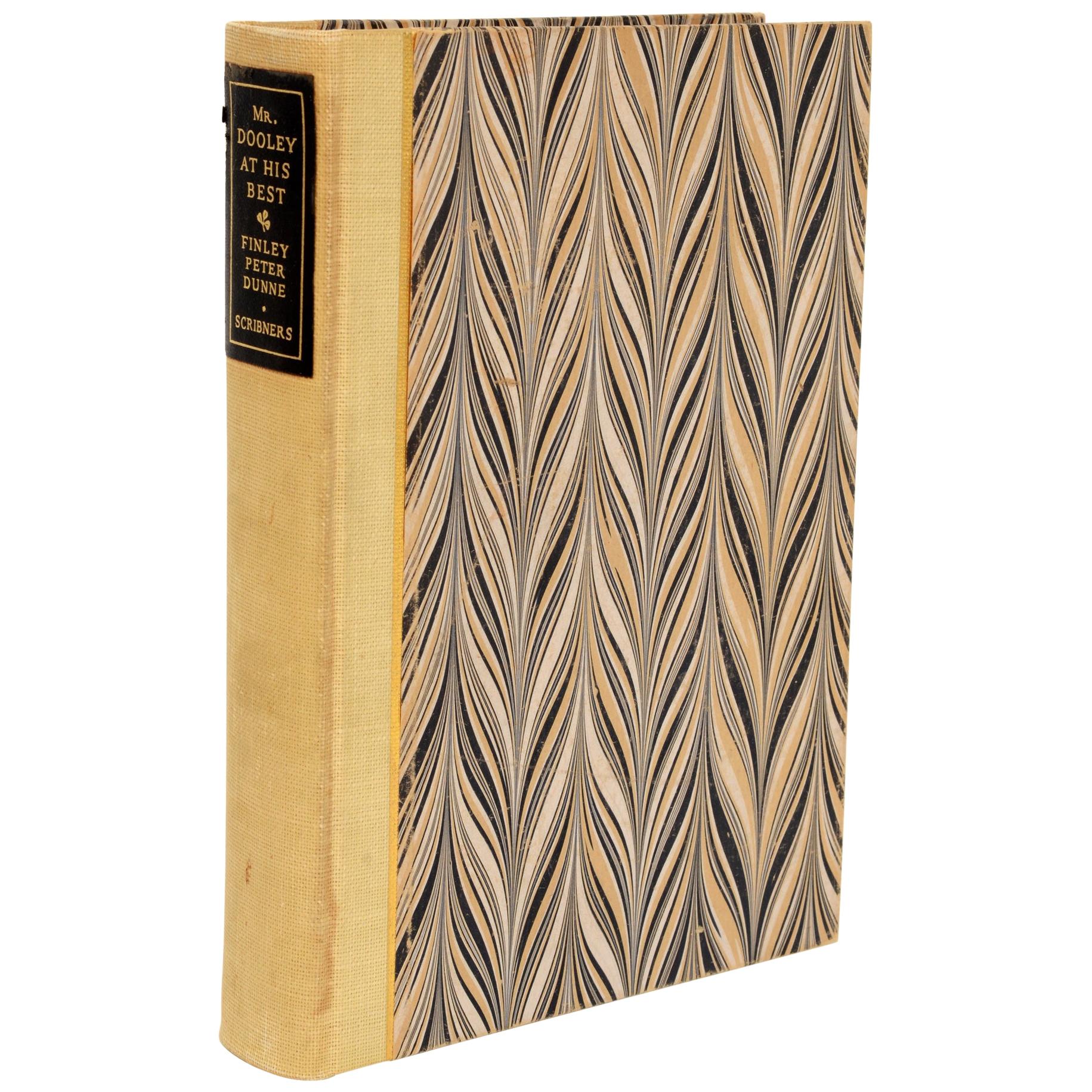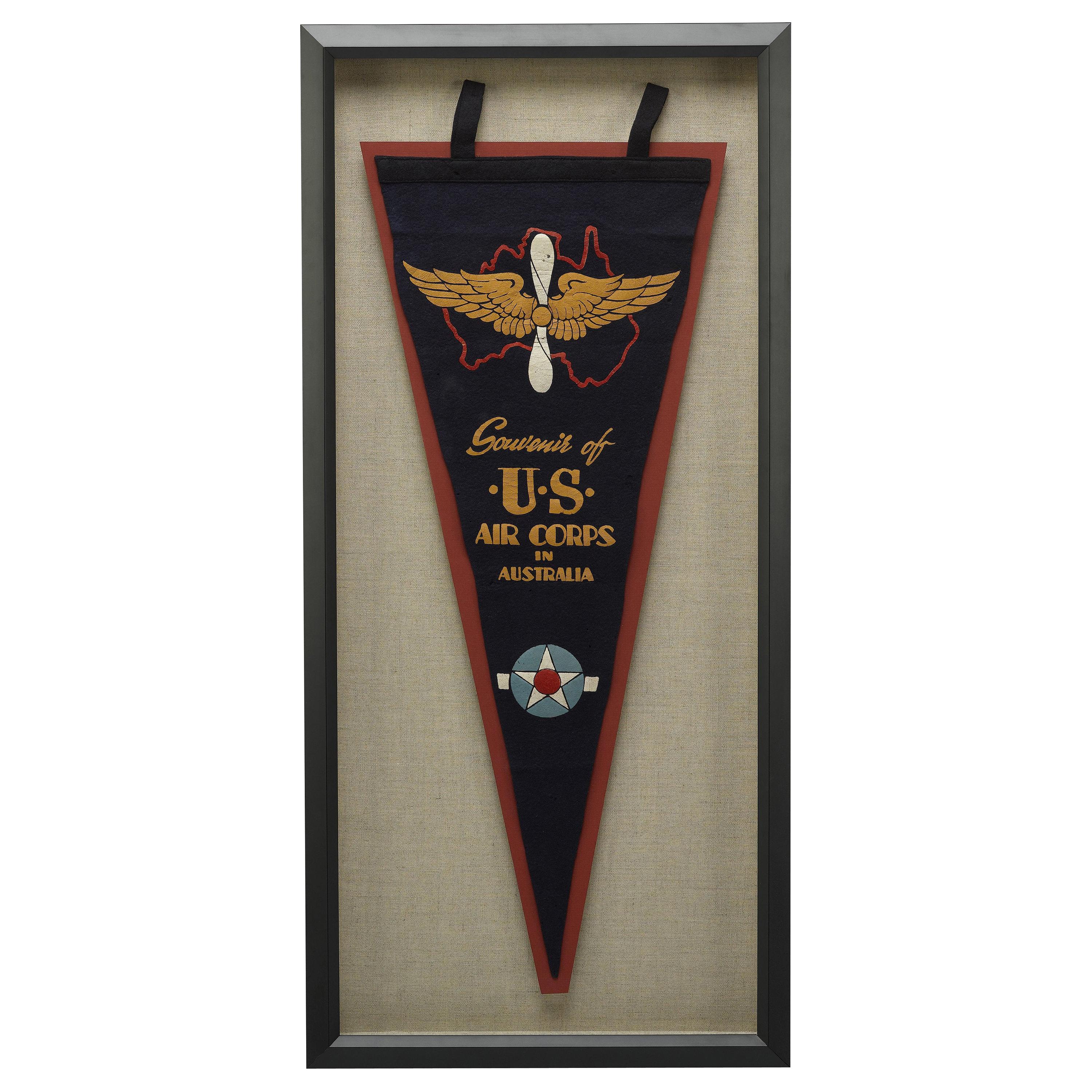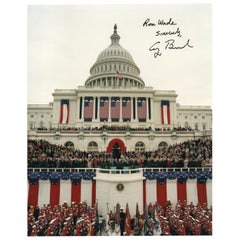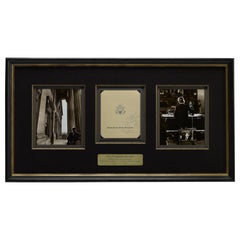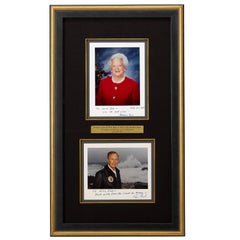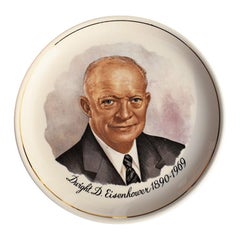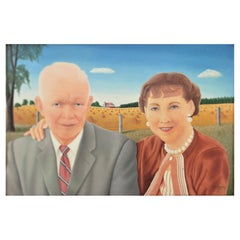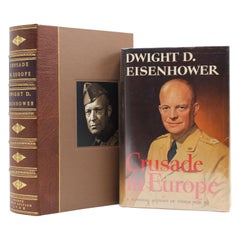
Crusade in Europe, Signed and Inscribed by Dwight D. Eisenhower, First Edition
View Similar Items
Want more images or videos?
Request additional images or videos from the seller
1 of 9
Crusade in Europe, Signed and Inscribed by Dwight D. Eisenhower, First Edition
About the Item
- Dimensions:Height: 9 in (22.86 cm)Width: 6 in (15.24 cm)Depth: 1.75 in (4.45 cm)
- Materials and Techniques:
- Period:
- Date of Manufacture:1948
- Condition:Wear consistent with age and use. Dust jacket illustrations are bright on cover and spine, with only light toning to the spine. Publisher’s tan cloth boards, title printed on spine. Title on spine slightly worn. Illustrated endpapers. Lacking first edition statement on copyright page.
- Seller Location:Colorado Springs, CO
- Reference Number:Seller: BK07761stDibs: LU909723424652
About the Seller
4.9
Platinum Seller
These expertly vetted sellers are 1stDibs' most experienced sellers and are rated highest by our customers.
Established in 2010
1stDibs seller since 2011
400 sales on 1stDibs
More From This SellerView All
- George H. W. Bush Signed and Inscribed 1989 Inaugural PhotographLocated in Colorado Springs, COPresented is a wonderful inscribed color photo of the inauguration of George H.W. Bush as the 41st President of the United States held on January 20, 1989. The inauguration marked the commencement of the four-year term of George H. W. Bush as President and Dan Quayle as Vice President. The photograph is signed and inscribed to Ron Wade, who once served as a White House page for President Nixon. Inscription reads, "To Ron Wade/ Sincerely /George Bush" Mr. Wade then scripted a note on the verso of the photo, stating "Signed as President, week of 6-1/-89". The inauguration of George H. W. Bush as the 41st president of the United States was held at the West Front of the United States Capitol in Washington, D.C. This was the 51st inauguration. Chief Justice William Rehnquist administered the presidential oath of office to Bush and Justice Sandra Day O'Connor administered the vice presidential oath of office to Quayle. Bush was the first sitting vice president to be inaugurated as president (not due to his predecessor's death or resignation) since Martin Van Buren...Category
Vintage 1980s American Historical Memorabilia
MaterialsPaper
- John F. Kennedy Signed Senate Menu CollageLocated in Colorado Springs, COPresented is a John F. Kennedy inscribed and autographed United States Senate Restaurant menu. Kennedy signed the menu on April 10, 1957, when he was a Senator representing the state of Massachusetts...Category
Vintage 1950s American Historical Memorabilia
MaterialsPaper
$8,160 Sale Price20% Off - George H. W. Bush & Barbara Bush Signed PhotographsLocated in Colorado Springs, COThis is a handsome collage of two signed and inscribed photographs of George H. W. Bush and Barbara Bush. Both photographs are inscribed to the same rec...Category
Late 20th Century American Political and Patriotic Memorabilia
MaterialsPaper
- Political Debates Between Abraham Lincoln & Stephen A. Douglas, Limited EditionLocated in Colorado Springs, COLincoln, Abraham and Stephen A. Douglas. Political Debates Between Hon. Abraham Lincoln and Hon. Stephen A. Douglas, In the Celebrated Campaign of 1858, in Illinois, Including the Preceding Speeches of Each, at Chicago, Springfield, Etc.; Also, the Two Great Speeches of Mr. Lincoln in Ohio, in 1859. Cleveland: The Burrows Brothers Company, 1894. Limited edition printing, No. 168 of 750. Presented in ¼ leather and cloth binding, with gilt titles and raised bands to spine, with a new archival cloth slipcase. This is a special limited edition printing of the political debates of Lincoln and Stephen Douglas...Category
Antique Late 19th Century Political and Patriotic Memorabilia
MaterialsPaper
- Ulysses S. Grant Signed Presidential Appointment, Dated February 28, 1871By Ulysses S. GrantLocated in Colorado Springs, COPresented is an original Ulysses S. Grant signed Presidential Appointment, dating to February 28, 1871. Signed during the first term of Grant's presidency, the document appoints "Robert W. Healy" to the role of "Marshal of the United States in and for the Southern District of Alabama." The appointment is countersigned by "Hamilton Fish" as Secretary of State. The document is partially printed in formal script, and completed by hand in black ink. The document reads in full: “Ulysses S. Grant, President of the United States of America. To all who shall see these presents greeting: Know ye, That reposing special trust and confidence in the Integrity, Ability, and Diligence of Robert W. Healy, I have Nominated, and, by and with the advice and consent of the Senate, DO APPOINT HIM Marshal of the United States in & for the Southern District of Alabama; and do authorize & empower him to execute and fulfill the duties of that Office according to Law. And to hold and hold the said Office, with all the powers, privileges, and emoluments to the same of right appertaining, unto him, the said Robert W. Healy, for the term of four years from the day of the date hereof, subject to the conditions prescribed by law. In Testimony Whereof, I have caused these Letters to be made Patent, and the Seat of the United States to be hereunto affixed. Given under my hand, at the city of Washington, the Twenty eighth...Category
Antique 1870s American Historical Memorabilia
MaterialsPaper
- "Memoirs of Richard Nixon" Two-Volume Set, Easton Press Edition, 1988Located in Colorado Springs, CONixon, Richard. The Memoirs of Richard Nixon. Norwalk: The Easton Press, 1988. Two-volume set. Bound in full leather with 22-karat gold embossing. Housed ...Category
Vintage 1980s American Books
MaterialsGold Leaf
You May Also Like
- President Dwight D. Eisenhower Commemorative Ceramic PlateLocated in Oklahoma City, OKA round ceramic commemorative plate of President Dwight Eisenhower. The plate is circular, with gold detail around the edges, and a portrait of Presi...Category
20th Century North American American Classical Historical Memorabilia
MaterialsGold
- Large Mid-Century Era Watercolor Painting of President Dwight & Mrs. EisenhowerLocated in Hamilton, OntarioThis large and well executed original watercolor painting on masonite board is signed by a Jim Barclay, presumably from the United States, dating to 1964 and done in a period folk art style. The painting depicts President and Mrs. Dwight Eisenhower...Category
Mid-20th Century American Folk Art Paintings
MaterialsMasonite, Paint
- Large Scale Printed Kerchief of the Signing of the Declaration of IndependenceLocated in York County, PARare, large scale Kerchief with a beautifully engraved image of John Trumbull’s “declaration of independence,” likely made in...Category
Antique Mid-19th Century American Political and Patriotic Memorabilia
MaterialsCotton
- Mr. Dooley at His Best, by Finley Peter Dunne Edited by Elmer EllisLocated in valatie, NYMr. Dooley at His Best. Edited by Elmer Ellis at the University of Missouri. With a Foreword by Franklin P. Adams. New York: Charles Scribner's Sons, 1938. First edition, 1st printing, one of 520 copies with one page of the author's original manuscript. Frontispiece portrait. 291 pp. Buckram and decorated boards with a leather label. Finley Peter Dunne (1867- 1936) was an American humorist and writer from Chicago. In 1898 Dunne published Mr. Dooley in Peace and in War, a collection of his nationally syndicated Mr. Dooley sketches. Speaking with the thick verbiage and accent of an Irish immigrant from County Roscommon, the fictional Mr. Dooley expounded upon political and social issues of the day from his South Side Chicago Irish pub...Category
Vintage 1930s American Books
MaterialsPaper
- "The Second World War, " by Winston ChurchillBy Houghton Mifflin & Co.Located in Austin, TXThe Second World War by Winston Churchill from Houghton-Mifflin Company, Boston. A vintage edition of Winston Churchill's six-volume memoir, The Second World War, for which he was a...Category
Mid-20th Century American Modern Books
MaterialsPaper
- 13 Star Antique American Flag in the Betsy Ross Pattern, ca 1861-1865Located in York County, PA13 star antique American flag in the Betsy Ross pattern, one of just three examples that I have encountered that pre-date the 1890’s; an extraordinary find, civil war period (1861-1865) or just after, extremely large among its counterparts of all periods in this design: Exceptional, early, American national flag, with 13 stars arranged in the circular wreath pattern most often attributed to Betsy Ross. Since there was no official configuration for the stars of the American flag until 1912, when our nation received its 47th and 48th states, the design, before that time, was left to the whims of the maker. This led to an almost unimaginable spectrum of star arrangements on the American flag during the 18th and 19th centuries. Even within the 13 star count, alone, there are at least 80 known patterns—more than the average person would even think possible. 13 star flags have been made throughout American history, from at least June 14th, 1777, when the first Flag Act was passed by Congress, until the present. They have been continuously produced for reasons both patriotic and utilitarian. Because this was the original number of stars on the American flag, representing the 13 colonies, it was appropriate for any device made in conjunction with celebrations or notions of American independence. 13 star flags were thus displayed at patriotic events, including, but certainly not limited to, such occasions as Lafayette’s final visit, in 1825-26, the nation’s centennial in 1876, and longstanding celebrations of Independence Day. From at least 1840 onward, 13 star flags were produced for presidential campaigns, drawing a parallel between the past and present struggles for freedom, and were carried by soldiers, during the Mexican and Civil Wars, for the same purpose. Throughout history, and even today, they are boldly displayed at every presidential inauguration. 13 star flags were flown by American ships both private and federal. The U.S. Navy used 13 stars on the ensigns made for small boats, because they wished the stars to be more easily discernable at a distance. Private ships often copied Navy practice, and when commercial flag makers first began to produce flags with pieced-and-sewn construction, in small sizes, in large quantity, they frequently employed the 13 star count. Flags in the Betsy Ross design are widely admired, due to the longstanding popularity of the Ross family myth. While many Americans learned in grammar school that Betsy Ross made and designed our first flag, and that the stars appeared in a circular fashion, there is, unfortunately, no way to prove the claim. No colonial examples have survived with this pattern of stars. In fact, while arranging the stars in a single circle seems quite logical, among the various choices that might come to mind, early American flags with this star pattern are curiously absent. One of the interesting misconceptions about 13 star flags is that the Betsy Ross pattern, even if not the original design, must have been common in early America. Logic would suggest this, given the frequency with which it appears in modern times, but this isn’t actually the case. In fact, the pattern is seldom encountered anywhere until much later. In more than 30 years of buying and selling early Americana, and over 20 years of extensive focus on the American flag specifically, through aggressively buying, researching, evaluating, restoring, and curating exhibitions, I have thus far encountered just three examples of Betsy Ross pattern flags that I can confidently date prior to the 1890's. No one knows what the first flag looked like. While there is no precise reason that the Betsy Ross design could not have been the first, one of the best arguments against it, is illustrated by the simple fact that so many 13 star flags exist without it. If the Ross configuration was the original, it stands to reason that the pattern would have been reproduced with at least some degree of frequency. Research conducted by the National Museum of American History notes that the story of Betsy Ross making the very first American flag for General George Washington, in the company of George Ross and Robert Morris, entered into American consciousness about the time of the 1876 centennial. The tale was immensely popular among an American public eager for stories about the Revolution and its heroes. The first documentation of it appeared shortly beforehand, in 1870, in a paper written by Betsy’s grandson, William Canby, for the Pennsylvania Historical Society. At the time, Canby made no mention of how the flag was designed, save for the fact that it had 5-pointed stars, per his grandmother’s suggestion. Because no earlier documentation supports the story, most flag scholars feel it was a grand hoax, fabricated by Canby for his own interests. Nothing survives in the collective writings of the three men, for example, nor in records of their words and deeds, which are fairly extensive. As with most things, reality is perhaps somewhere in the middle ground, with some of the details based on fact and some on fiction, made up, misinterpreted, or imagined from family accounts. The first time that a star configuration gets attached to the Ross story appears to have occurred during the last decade of the 19th century. In 1892, Charles Weisgerber painted a nine-by-twelve-foot rendition of the fabled meeting between Betsy and George Washington, in which there is a flag with a circular wreath. Shortly afterwards, in 1898, Betsy’s granddaughter and great-granddaughter began to make flags in the East Wing of Independence Hall in Philadelphia, selling them to tourists while disseminating the family folk tale. In that same year, Weisgerber and a “group of concerned citizens” sought to preserve Betsy’s former Philadelphia residence at 239 Arch Street, where she lived at the time the flag would have been sewed. Weisgerber moved his family into the house and immediately opened to the public the room in which Betsy was said to have worked her magic. Ten-cent memberships were sold to fund renovations and donors received a small calendar, to which a cotton 13 star Betsy Ross pattern parade flag was affixed. The effects of these events caused the Ross legend to stick and the story, with the corresponding flag design, has appeared ever since in more places than one could ever hope to count. The stars of this particular flag are made of cotton, hand-sewn, and double-appliquéd (applied to both sides). The canton and stripes of the flag are made of wool bunting that has been pieced and joined with treadle stitching. There is a sailcloth canvas binding along the hoist, with two brass grommets, one each at the extreme top and bottom. Along this, on the obverse, near the bottom, are two, unusual characters, embroidered with brown thread. These may be letter “I’s,” possibly forming a the Roman Numeral “II.” They are followed by an inscription, in blue ink, that appears to read “A. N. Smith.” The first character is stylized, and may alternatively be a “D,” “H,” or perhaps a “J.” Note how the binding is extended beyond the top and bottom-most points. Though quite unusual, this is sometimes encountered in early examples. The folding of the wool bunting back onto itself, with the binding stitched so that part of the fold is exposed, tends to be an early characteristic. Common in Civil war flags...Category
Antique 1860s American Political and Patriotic Memorabilia
MaterialsCotton
Price Upon Request
